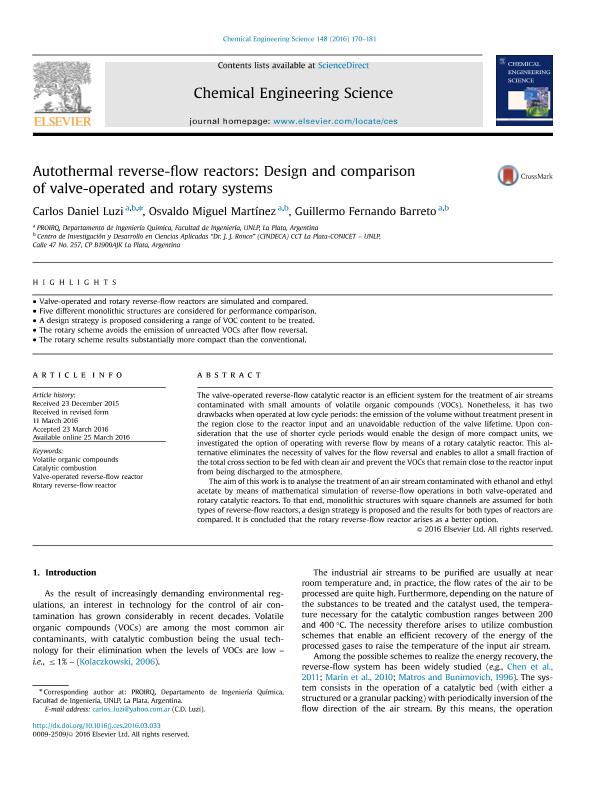Artículo
Autothermal reverse-flow reactors: design and comparison of vale-operated and rotary systems
Fecha de publicación:
25/03/2016
Editorial:
Pergamon-Elsevier Science Ltd
Revista:
Chemical Engineering Science
ISSN:
0009-2509
Idioma:
Inglés
Tipo de recurso:
Artículo publicado
Clasificación temática:
Resumen
The valve-operated reverse-flow catalytic reactor is an efficient system for the treatment of air streams contaminated with small amounts of volatile organic compounds (VOCs). Nonetheless, it has two drawbacks when operated at low cycle periods: the emission of the volume without treatment present in the region close to the reactor input and an unavoidable reduction of the valve lifetime. Upon consideration that the use of shorter cycle periods would enable the design of more compact units, we investigated the option of operating with reverse flow by means of a rotary catalytic reactor. This alternative eliminates the necessity of valves for the flow reversal and enables to allot a small fraction of the total cross section to be fed with clean air and prevent the VOCs that remain close to the reactor input from being discharged to the atmosphere. The aim of this work is to analyse the treatment of an air stream contaminated with ethanol and ethyl acetate by means of mathematical simulation of reverse-flow operations in both valve-operated and rotary catalytic reactors. To that end, monolithic structures with square channels are assumed for both types of reverse-flow reactors, a design strategy is proposed and the results for both types of reactors are compared. It is concluded that the rotary reverse-flow reactor arises as a better option.
Archivos asociados
Licencia
Identificadores
Colecciones
Articulos(CINDECA)
Articulos de CENTRO DE INV EN CS.APLICADAS "DR.JORGE J.RONCO"
Articulos de CENTRO DE INV EN CS.APLICADAS "DR.JORGE J.RONCO"
Citación
Luzi, Carlos Daniel; Martinez, Osvaldo Miguel; Barreto, Guillermo Fernando; Autothermal reverse-flow reactors: design and comparison of vale-operated and rotary systems; Pergamon-Elsevier Science Ltd; Chemical Engineering Science; 148; 25-3-2016; 170-181
Compartir
Altmétricas




